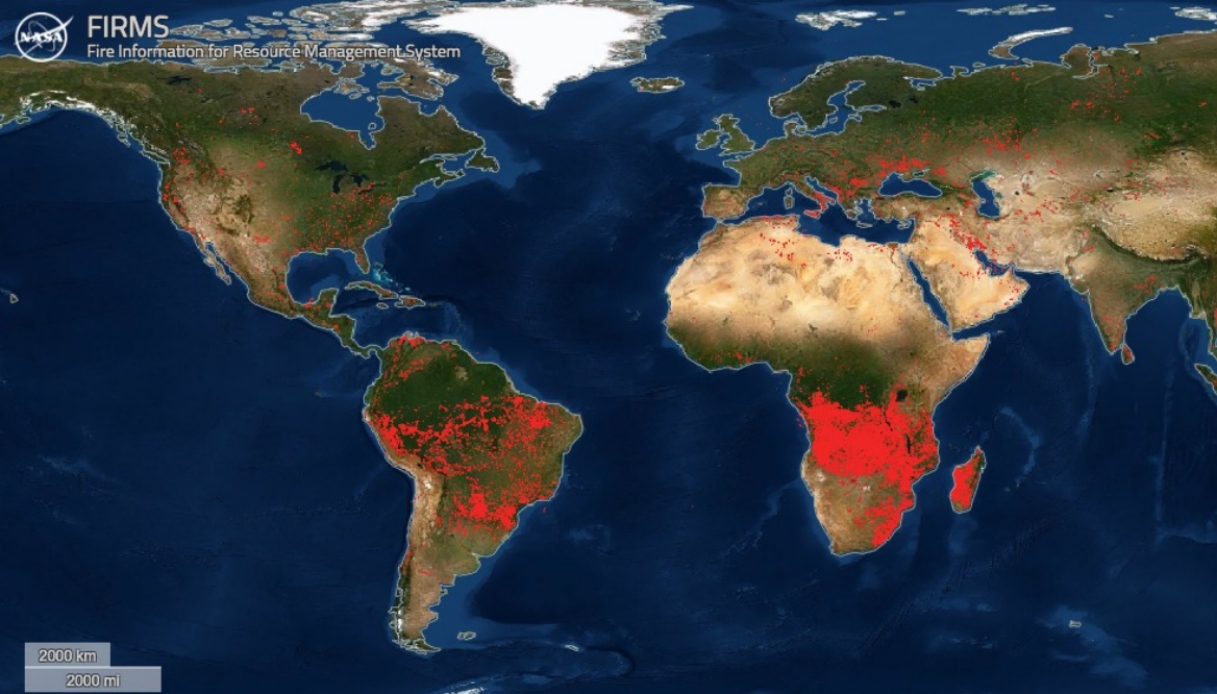Fire Information for Resource Management System images show all the places where fires are burning. From California to Italy and even as far as Siberia, there are widespread fires across the globe.
Much of the Earth is burning. To show it clearly is the map of the fires in progress in the world released by NASA based on the detection of satellites at high altitude. The instrument Modis, on board the NASA’s satellite Terra, detects all the places where there are high temperatures and fires are in progress. From the Fire Information for Resource Management System (FIRMS) of Nasa you can see the plan with red dots indicating all the fires spread around the globe. From Italy to Greece, Turkey, California, Australia, Africa, the Amazon and even Siberia, there are flames almost everywhere.
Nasa’s fire map
The FIRMS distributes data on active fires within 3 hours of satellite observation, constantly monitoring their activity. However, the system does not identify their magnitude or even origin. From the red dots that can be seen on the map, however, it can be seen that there are thousands of fires all over the world from North to South, East to West. The continent most affected is Africa, particularly in the central-southern part such as Zambia, Angola, Malawi and Madagascar. In this area it is fire season, the period in which farmers light fires to clear fields of old crops and prepare them for new ones.
In the Democratic Republic of the Congo the layer of smoke is so thick that many areas are completely obscured. A bruciare sono anche in Nord e Sud America, la penisola arabica, la costa mediterranea, l’Europa nord-orientale, l’Asia nella parte delle coste dell’India, nonchè Cina, Malesia e Indonesia. Tornando all’Africa, la posizione e il momento dell’anno suggeriscono appunto che i roghi siano dolosi e siano stati appiccati per scopi agricoli.
Nelle zone dell’Africa centro meridionale da migliaia di anni viene usato il fuoco per bruciare le sterpaglie, rinnovare i pascoli o la savana. Anche se la tecnica può essere un modo efficiente ed economico per gestire la terra, i roghi sono fonti di pericolo a causa del fumo, del rilascio di gas serra e della distruzione degli ecosistemi. In Africa centrale, ha spiegato la Nasa, la stagione degli incendi di solito inizia a maggio e raggiunge il suo picco in agosto.
Intanto, a luglio, è scoppiato anche un incendio in mezzo al mare nel Golfo del Messico causato dalla perdita di un gasdotto.
 Fonte foto: NASA/Fire Information for Resource Management System
Fonte foto: NASA/Fire Information for Resource Management System
Stefania Bernardini